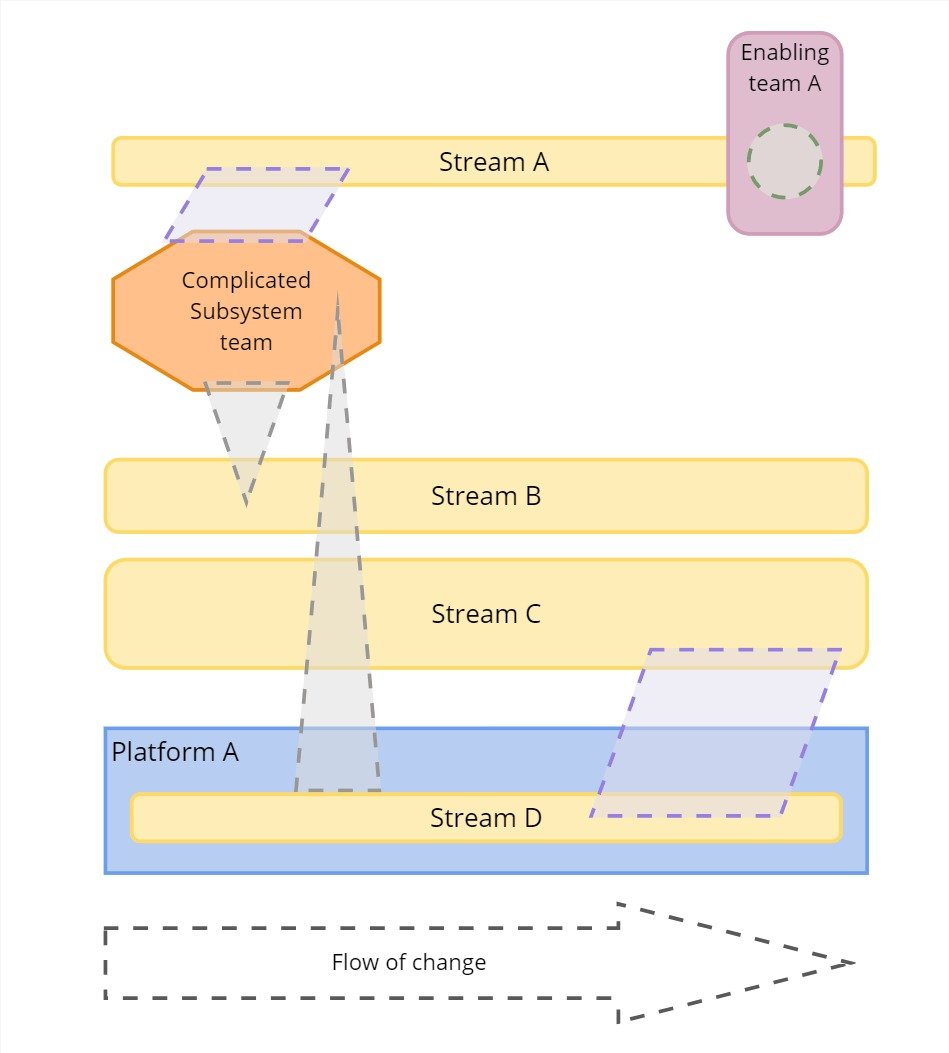Team Interaction Modeling with Team Topologies
Team Topologies provides a combination of principles and practices that can help structure and evolve an organization for effective collaboration, autonomy, delivery focus, and product alignment. Using the Team Topologies shapes and diagramming principles, it is possible to create a series of snapshots of your organization at various points in time that help you understand why the teams within your organization communicate and interact.
Exploring team and service boundaries with User Needs Mapping
User Needs Mapping refers to the first four steps of the Wardley Mapping process that can provide significant value when helping understand users/customers, their needs and the dependencies required to deliver those needs within an organization. By mapping out the dependency tree/value chain we can begin to explore, visualize and identify potential team boundaries by simply re-organizing the dependency tree and overlaying the Team Topologies team shapes. Using these visualizations we can then discuss whether those team boundaries seem appropriate and adjust where necessary. This can then form the basis of a Team Interaction Modeling process using the Team Topologies team shape templates.
Finding good stream boundaries with Independent Service Heuristics
The Independent Service Heuristics (ISH) are rules-of-thumb (clues) for identifying candidate value streams and domain boundaries by seeing if they could be run as a separate SaaS/cloud product. The ISH approach is a “rapid results” approach, and complementary to the approaches from Domain-driven Design (DDD). In particular, ISH is very suitable for conversations with people without an engineering or software background, enabling important discussion and alignment across organisational boundaries.
Remote-first Team Interactions with Team Topologies
Remote-first work is the "new normal" for companies around the world. There is no shortage of advice on how individual teams can bond and work effectively remotely.
However, there is not much on how to address remote interactions between different teams that need to collaborate remotely, as part of the same value stream. Moving from the physical to the online world can further expose pre-existing interaction problems, increase wait times and slow down delivery and possibly response to incidents.
Based on the ideas from Team Topologies, Manuel Pais and Matthew Skelton present some useful approaches to clarify and evolve inter-team interactions and communication in this remote-first world.
Moving beyond static team structures to interactions and dynamic evolution
Matthew Skelton and Manuel Pais - co-authors of the book Team Topologies - discuss the need to move beyond static organizational structures and embrace dynamic, learning organizations where certain team interactions are explicitly specified and expected.
What are the core team types in Team Topologies?
Matthew Skelton and Manuel Pais - co-authors of the book Team Topologies - discuss the four core team types defined in the book Team Topologies and how these help to achieve a good flow of change and reduce cognitive load for people working on software systems.
What is a Thinnest Viable Platform (TVP)?
Matthew Skelton and Manuel Pais - co-authors of the book Team Topologies - discuss the concept of a Thinnest Viable Platform (TVP) and what this means for organizations building and running modern software systems.
Working with Gene Kim's IT Revolution Press
Matthew Skelton and Manuel Pais - co-authors of the book Team Topologies - discuss what it was like to work with the publisher IT Revolution Press and the cover design of their book.








